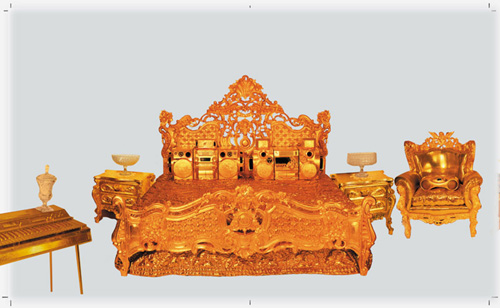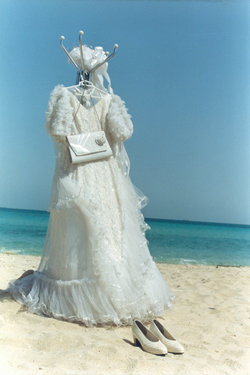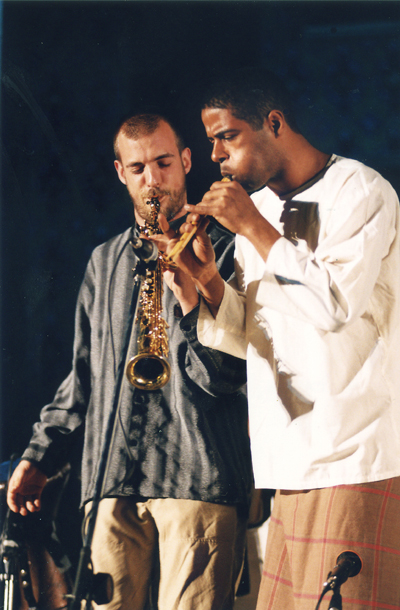
|
Far Near Distance Contemporary Positions of Iranian Artists Start 19.03.2004 19:00 End 09.05.2004 Haus der Kulturen der Welt - House of World Cultures FAR NEAR DISTANCE presents, for the first time in Germany, a panorama of contemporary positions of artists of Iranian origin operating in and between Tehran, London, Paris and the metropolises of the USA. This network has produced some very interesting works that show the way art reflects history, as well as social and political conditions. The artists refer to Iranian traditions, capturing lived experiences in metaphors, powerful symbols and poetry. They reveal and cross boundaries and restrictions, situate contradictions and paradoxes in a way that uncovers inconsistencies within the system. The results works that are as expressive as they are remarkable, and which blend reality and fiction in order to bewilder and create novel works. The artists living outside Iran have received these impulses as a challenge. But in the midst of all, their artistic language creates distance through irony, sarcasm and humour. This tension has created that reflexivity which we call Far Near Distance.  By means of a large exhibition and a continuous series of films, "Far Near Distance" places emphasis on the visual arts. The curator is Rose Issa, an Iranian expert on Middle Eastern and Arab art and film who lives in London. The program, which will also showcase music, theater and literature supplemented by a conference and youth program, is to take place over a period of about eight weeks. The program opens on March 19, two days before the Iranian New Years holiday, Nourus. The exhibition Far Near Distance presents, in the form of hypotheses, artistic research, strategies, and positions in the context of Iran. The artistic grappling with contemporary life - within the country as well as in the Diaspora - thereby takes central stage. Locating and understanding one's own heritage become the key to artistic survival in narrowed circumstances characterized by censorship, financial constraints, isolation, poor or non-existing infrastructures, and a severe lack of opportunities to access information and exhibit works. The challenge of finding a new artistic language in the face of these difficulties has led to a fascinating development for many artists who come from Iran. Common to all of them is the interest in sites of permeability, mobility, and change, beyond or shifting all boundaries, while asserting unusual standpoints. In the 1980s, Iranian film began its conquest of the international scene. It thereby attained a key function in reconnecting Iran to the rest of the world. Today, Iranian film has many international prizewinners, is present in international film distribution, and is reviewed in Western newspapers. The first films were pioneering acts, daring experiments. They became successful strategies and developed an aesthetic of their own which has spread around the world. Iranian artists and directors speak a new humanistic language known for its simplicity and modesty in treating themes and for showing contradictions within the society.  The film program will present new cinematic approaches as well as the great directors, concentrating on five aspects of film: Real Fiction is concerned with crossing boundaries between documentary and feature film; The Making of Feature Films examines the medium and its production; Alienation focuses on the polarization and alienation in Iranian society, which leads to a kind of schizophrenia of everyday life; Documentaries shows highlights of documentary film creation in Iran; and, finally, Private and Popular presents films that are big commercial successes within the country, but almost unknown abroad. In addition to this series curated by Rose Issa, a selection of films from the "Tehran International Short Film Festivals 2003" will be shown. These are mostly semi-documentary feature films that extraordinarily and suspensefully portray the most various facets of everyday life in Iran. The music program raises the question of productive tension between local tradition and global developments. Iran's biggest music stars are as at home in the USA and Europe as well as in Iran - for example, Hussein Alizadeh, who is regarded as the renewer of traditional Persian music; Dariush, the master of the protest song; Susan Deyhim, a fascinating singer between New Music, popular music, and art music; and the famous traditional music ensemble Dastan. All produce internationally and give concerts all over the world for a growing community of fans, yet continually maintain a strong ties with tradition. Their yearning for their homeland, family, and friends is made clear in their dialogical encounter with traditional patterns of composition and improvisation. Parallel and following many years of silence, a new young music scene is emerging in Iran's big cities. Rock, pop, and jazz are played and sung, produced and listened to - but not yet danced to, at least not in public. Iranian youth are well informed via the Internet and mp3-files; they take up international trends and process them in their own highly creative way.The music program of Far Near Distance will comprise three areas: classical Persian music; Persian folk music; and rock, pop, and jazz. The theater program focuses on Iran's currently booming theater scene. The crucial forum for this development is the Fadjr Theater Festival, which in the last five years has opened up internationally and has invited major theater productions from Germany, in particular, to Tehran. It has meanwhile become one of the biggest theater festivals in the Islamic world, but above all the only real platform for new productions from Iran. In past years, critical and radically aesthetic works, in particular, have been festival prizewinners, thus making theater a leading art form of the critical cultural process in Iran. Literature enjoys high esteem in Iran. Building on the centuries-old tradition of the Persian poetry of Rumi and Hafiz, Sadeq Hedayat's novel The Blind Owl (1936) has developed a modernist literary language of its own in prose. The literature program will show how Iranian authors use literature to reflect upon issues concerning social realities. As early as 1994, writers raised their voices against the difficult conditions under which art has had to be produced since the Islamic Revolution. In the "Manifesto of the 134", they demanded the creation of an independent writer's association, which was founded a few years later. Iranian authors have clung unswervingly to the creation of a modern literature that places the individual in its center and maintains its freedom from ideological directives. Numerous magazines and publishing houses are creating a literary landscape that is extraordinarily lively and colorful.  The conference program Framing explores the exhibition and presentation practice of non-European cultures in the Western context and the resulting structures of perception in the intercultural field. On the basis of the exhibition "Far Near Distance", curators, experts, and artists will discuss how exhibition practice and artistic strategies produce a specific perception of Iran and of art from Iran. "How has Iran been exhibited/ represented/ commodified/ framed. Not only by nasty Westerners, but also within the country itself. The event would basically be an inquiry into 'representations of Iran'." (Tirdad Zolghadr) Here, discussion will also focus on the influence that positioning such an exhibition in the House of World Cultures, in Berlin, in Germany, has on the perception of this art - as well as on the role that the specifically Western relationship between art and economics plays in this question. Within Iran, a youth culture is developing, seeking its own path between Western influences and the realities of an Islamic state, and finding in this process its own new forms of expression. This generation is especially relevant to Iran's development - about 60 percent of Iran's population is under 25 years old. The medium of film/video will play a central role in the youth program, in the form of a video workshop and associated workshops on music, visual art, theater, and literature. Iranian artists and directors will forge ties with the living situation of young people in Germany. In youth cultures, the private sphere and the public sphere are often stand-ins for restriction and freedom. In Iran's case, the private sphere promises freedom, while Western youth cultures often equate the exploration of the public space with individual freedom.  Front Page Front Page |